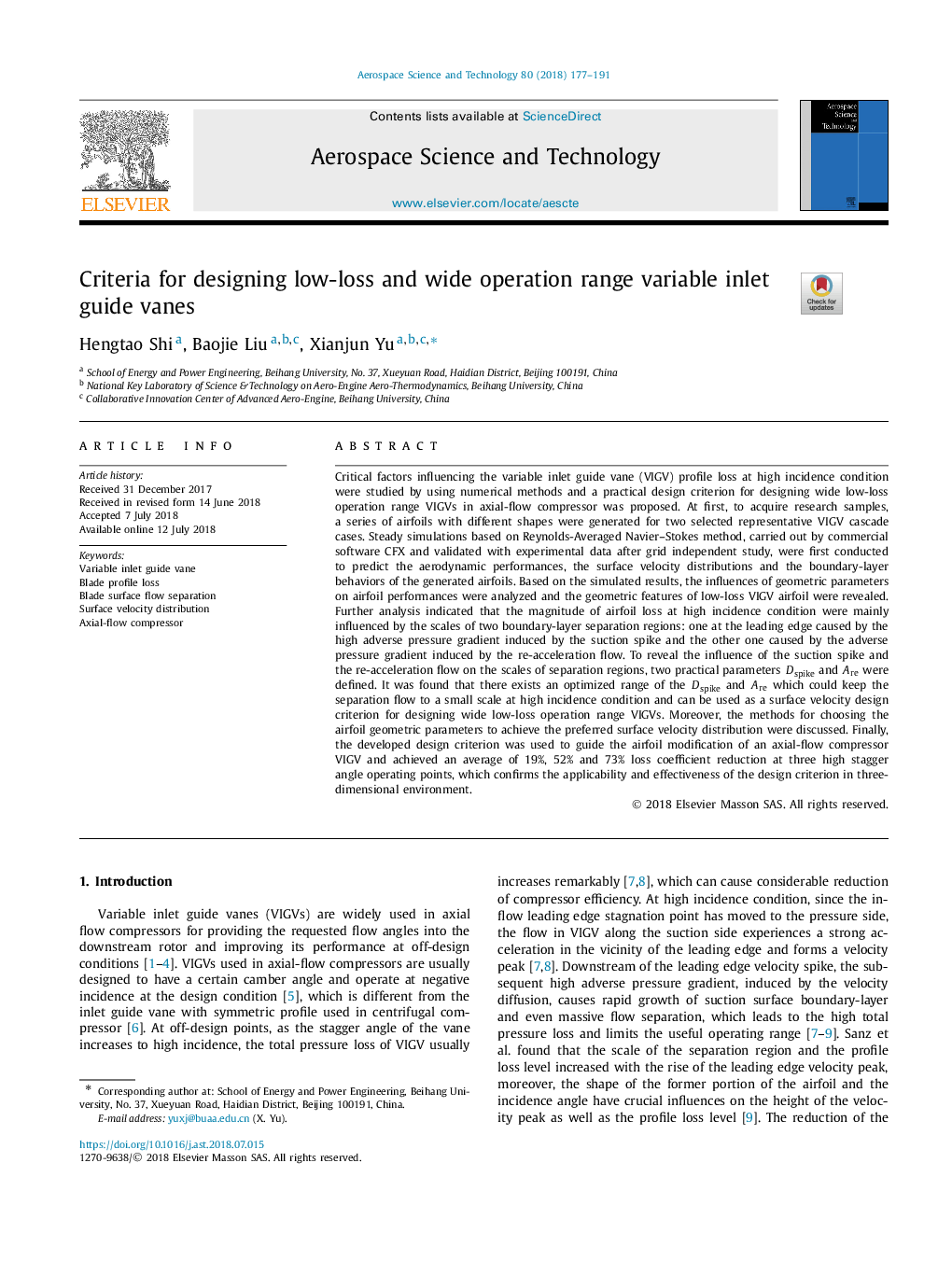| Article ID | Journal | Published Year | Pages | File Type |
|---|---|---|---|---|
| 8057238 | Aerospace Science and Technology | 2018 | 15 Pages |
Abstract
Critical factors influencing the variable inlet guide vane (VIGV) profile loss at high incidence condition were studied by using numerical methods and a practical design criterion for designing wide low-loss operation range VIGVs in axial-flow compressor was proposed. At first, to acquire research samples, a series of airfoils with different shapes were generated for two selected representative VIGV cascade cases. Steady simulations based on Reynolds-Averaged Navier-Stokes method, carried out by commercial software CFX and validated with experimental data after grid independent study, were first conducted to predict the aerodynamic performances, the surface velocity distributions and the boundary-layer behaviors of the generated airfoils. Based on the simulated results, the influences of geometric parameters on airfoil performances were analyzed and the geometric features of low-loss VIGV airfoil were revealed. Further analysis indicated that the magnitude of airfoil loss at high incidence condition were mainly influenced by the scales of two boundary-layer separation regions: one at the leading edge caused by the high adverse pressure gradient induced by the suction spike and the other one caused by the adverse pressure gradient induced by the re-acceleration flow. To reveal the influence of the suction spike and the re-acceleration flow on the scales of separation regions, two practical parameters Dspike and Are were defined. It was found that there exists an optimized range of the Dspike and Are which could keep the separation flow to a small scale at high incidence condition and can be used as a surface velocity design criterion for designing wide low-loss operation range VIGVs. Moreover, the methods for choosing the airfoil geometric parameters to achieve the preferred surface velocity distribution were discussed. Finally, the developed design criterion was used to guide the airfoil modification of an axial-flow compressor VIGV and achieved an average of 19%, 52% and 73% loss coefficient reduction at three high stagger angle operating points, which confirms the applicability and effectiveness of the design criterion in three-dimensional environment.
Related Topics
Physical Sciences and Engineering
Engineering
Aerospace Engineering
Authors
Hengtao Shi, Baojie Liu, Xianjun Yu,
